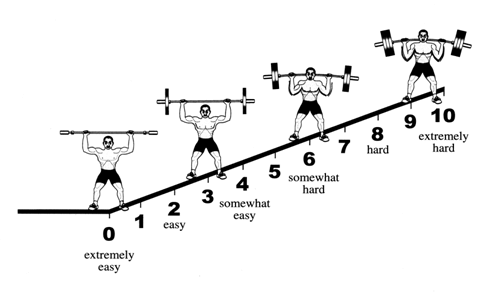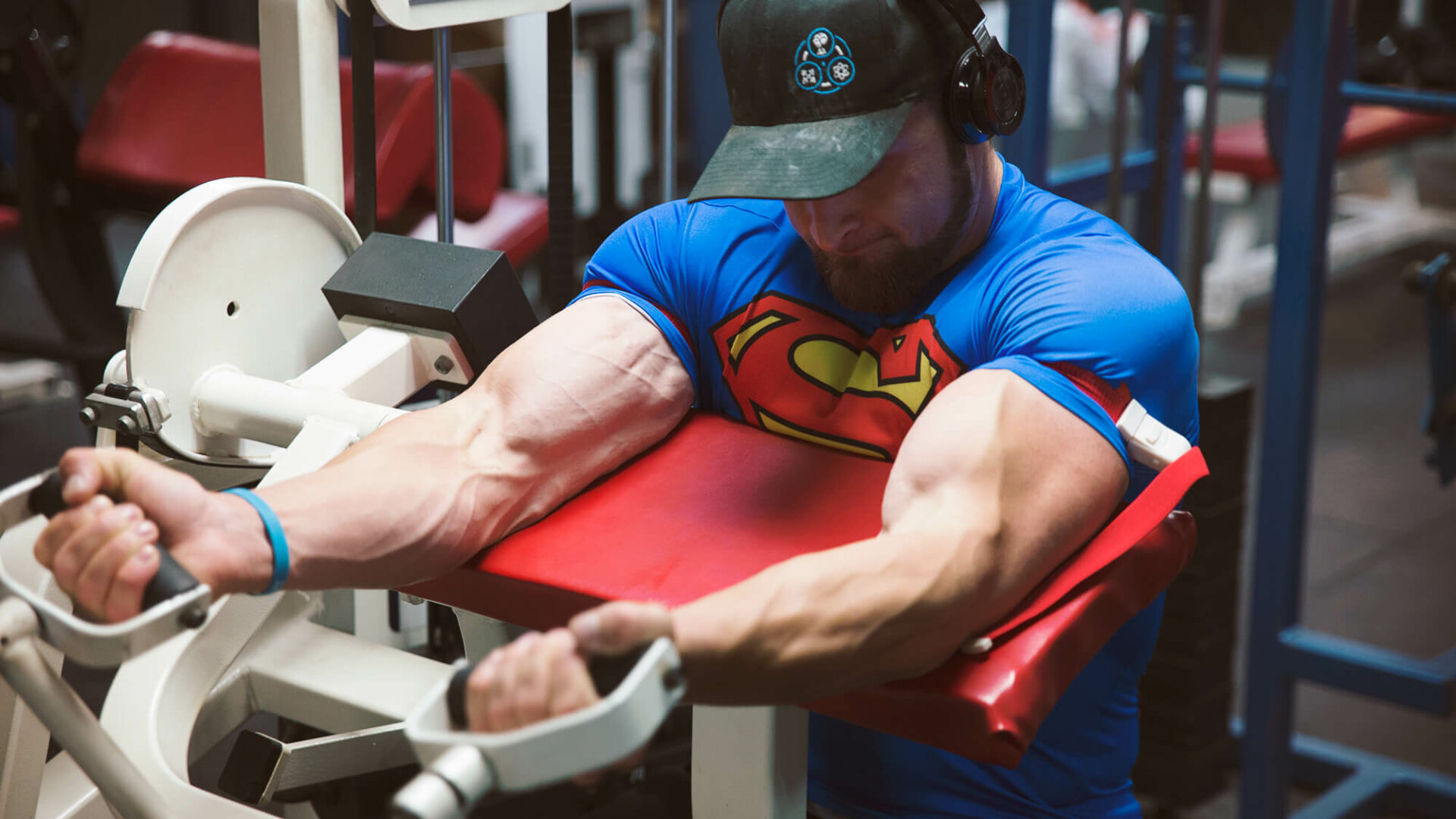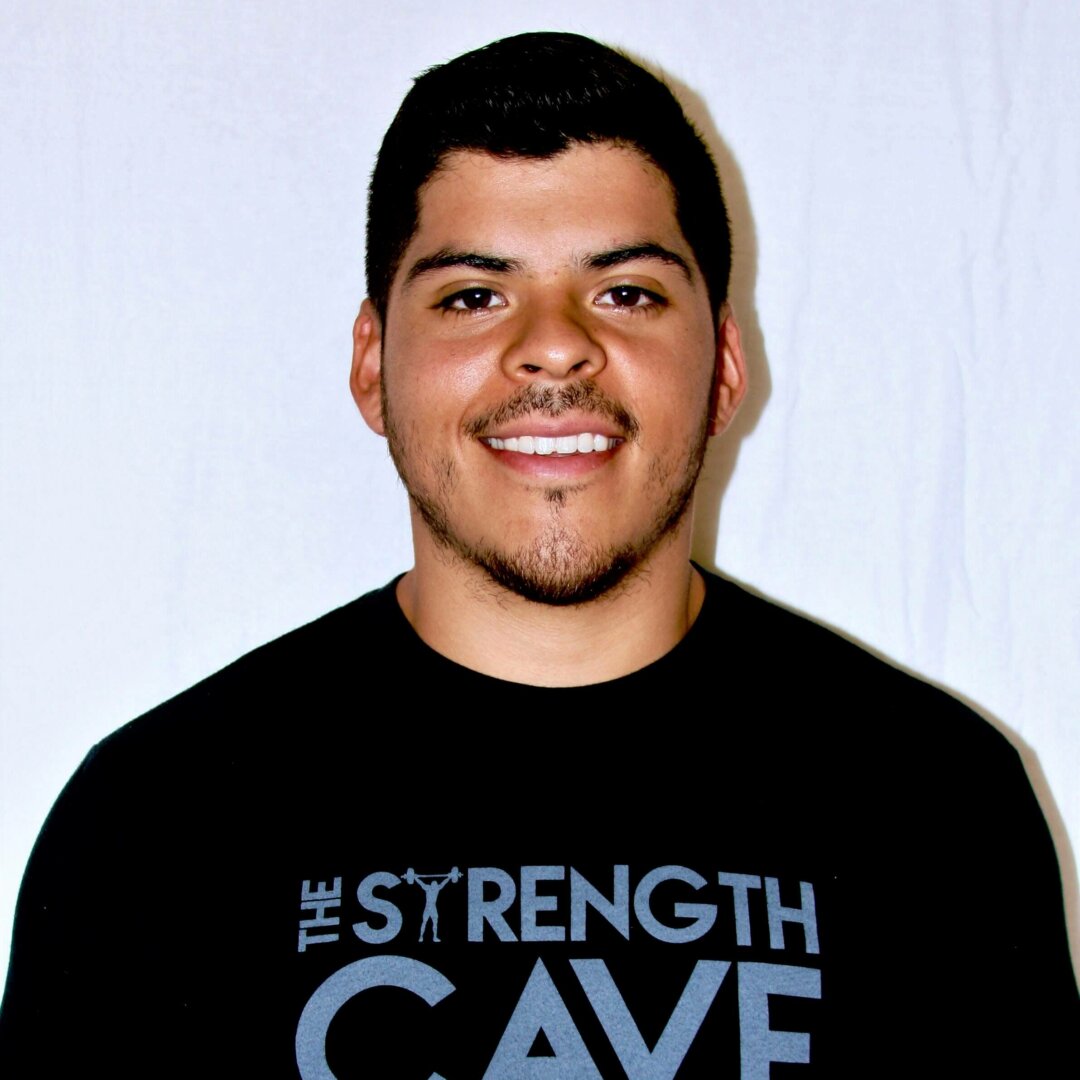One of the wonderful phenomenon that occurs when you begin lifting weights is the drastic change in body composition and strength during the first few months of training. Your muscles grow larger and the weight on the bar increases every time you set foot in the gym. Then, just as you’ve fallen in love with the process and your results, the gain train slows to a crawl. The lassez-faire approach to training that yielded such amazing progress as a beginner just doesn’t seem to work any longer. You can’t just throw weight on the bar and hope for the best. The time has come to get a bit more refined when it comes to your training. Tracking your training load is an important piece of the puzzle if you want to ensure you are getting the right dose response from your hard work. But with all of the different metrics that exist for completing this task, it can be difficult to know which ones are most appropriate. From simply tracking sets and reps to diving deep into bar velocity, each tactic has an appropriate place depending on the goals you wish to achieve.
Tools for Tracking Volume
Two of the most important factors involved in monitoring the workload of a resistance-training program are volume and intensity. Generally, the volume of a session is calculated by multiplying the amount of weight used for an exercise by the number of sets and number of repetitions completed. This calculation yields a value referred to as total volume or tonnage. This is a useful measurement that a lifter can use to track their workload over time early in their lifting career. One can begin to notice trends in how volume is distributed over time and make decisions on the volume of work that should be done going forward.
However, as one becomes better trained, intensity plays an important role in determining the quality of the volume during training. For example, an athlete who can back squat 300 pounds can accumulate 6000 pounds of volume by squatting 120 pounds (40% 1RM) for five sets of ten repetitions. They could also accumulate that volume by squatting 240 pounds (80% 1RM) for five sets of five repetitions. Accumulating that volume with 80% of 1RM will have a drastically different impact on stress, fatigue, and adaptation than doing so with 40% of the athlete’s 1RM.
A more effective strategy that advanced trainees can use may be tracking the relative volume of their training. This involves multiplying the number of sets and repetitions of an exercise by the intensity used, which yields a figure expressed in arbitrary training units (ATU). The intensity to which we relate this volume come from several sources including RPE/RIR (which is explained later), or perhaps the percentage of repetition max that was used. The percentage of repetition max would be the maximum weight that the athlete can theoretically handle for the prescribed number of repetitions compared to the weight that is being used for that day. Reconsidering the theoretical 300 pound back-squatter, a coach might estimate that their athlete can perform a 5RM with a maximum of 260 pounds. Using 240 pounds for the athlete’s working weight will equate to 92% of their 5RM for five sets of five repetitions and thus they will have accumulated a relative volume of 2,300 ATU (5 x 5 x 92).
Tools for Tracking Intensity
While intensity is indirectly monitored as a result of tracking relative volume, it is still important to directly measure the intensity of the resistance training bout. One popular method for monitoring intensity is the use of Rating of Perceived Exertion or RPE. The Borg 15-point RPE Scale was originally developed to monitor the amount of exertion used in a medical test or athletic test. Recently, several adaptations of the Borg scale have been developed to better assess exertion during a resistance training bout. One such adaptation called the OMNI Resistance Exercise Scale (OMNI-RES) has been found to be effective in determining the amount of exertion put forth during an exercise bout. This tool uses a 0-10 scale in which each sequential number represents an increase in difficulty level for the exercise.

To make the use of RPE even simpler, coaches can use session RPE to gauge the perceived intensity of the exercise bout. Rather than reporting RPE for each individual set of exercise, the athlete can simply report an RPE value for the entire session. Session RPE have shown to accurately and reliably represent training load. This allows a coach to easily track the perceived intensity of each training session and make adjustments to load and volume as needed.
It is also worth mentioning that some coaches prefer to prescribe intensity based on Repetition In Reserve (RIR). This metric offers an advantage to RPE based prescriptions because it quantifies how much effort a person gave in relation to how many repetitions they could have completed. This data can be used to predict maximal strength which is especially useful for powerlifters and weightlifters. The best strategy may be to use RIR for prescription purposes while using session RPE to monitor total intensity over time.
A more objective approach to determining intensity and exertion is to monitor bar velocity during the concentric portion of an exercise. Several studies have shown that a negative linear relationship exists between concentric bar velocity and the relative load lifted. This means that as an athlete lifts closer to their true 1RM, the velocity of their movement will decrease. It has also been shown that the speed which a person exhibits when performing a 1RM stays relatively constant despite increases in strength or training age. Given that these relationships exist between movement speed and exertion, a coach can utilize velocity data in two ways:
- The coach can develop a pre-training test that assesses bar velocity during a submaximal task which can be used to determine the athlete’s global fatigue.
- Set-by-set bar velocity can be monitored to gain objective insight into the difficulty of the exercise session.
While velocity based training does seem to eliminate the possible error associated with RPE/RIR based training, it is important to note that it does require the use of potentially expensive velocity tracking devices. It is also more time consuming than RPE prescription/reporting which can be a deal breaker for some. As a result, it may be difficult for many athletes and coaches to utilize velocity based training with their athletes.
Conclusion
Hopefully you can see that it is a good idea to track training volume and intensity (training load). Perhaps the real issue is choosing which measures to use on yourself or your clients. The truth is that each measure offers its distinct advantages and disadvantages. However, as long as you stay consistent with a given strategy there is probably no wrong answer in terms of which strategy is best. Whatever the case, using some of the strategies mentioned above will help you make better training decisions and lead to better training outcomes in the future.
| Method | Advantages | Disadvantages |
|---|---|---|
| sRPE/RIR |
|
|
| VBT |
|
|
References
- Borg, G. (1998). Borg’s perceived exertion and pain scales. Human kinetics.
- Campos, G.E., Luecke, T.J., Wendeln, H.K., Toma, K., Hagerman, F.C., Murray, T.F., Ragg, K.E., Ratamess, N.A., Kraemer, W.J. and Staron, R.S., 2002. Muscular adaptations in response to three different resistance-training regimens: specificity of repetition maximum training zones. European journal of applied physiology, 88(1-2), 50-60.
- Calvert, T. W., Banister, E. W., Savage, M. V., & Bach, T. (1976). A systems model of the effects of training on physical performance. Systems, Man and Cybernetics, IEEE Transactions on, (2), 94-102.
- Christen, J., Foster, C., Porcari, J. P., & Mikat, R. P. (2016). Temporal Robustness of the Session RPE. International journal of sports physiology and performance.
- González-Badillo, J. G., & Sánchez-Medina, L. S. (2010). Movement velocity as a measure of loading intensity in resistance training. Int J Sports Med, 31, 347-352.
- Haff, G. G. (2010). Quantifying workloads in resistance training: a brief review. Strength and Conditioning Journal, 10, 31-40.
- Irving, B. A., Rutkowski, J., Brock, D. W., Davis, C. K., Barrett, E. J., Gaesser, G. A., & Weltman, A. (2006). Comparison of Borg-and OMNI-RPE as markers of the blood lactate response to exercise. Medicine and science in sports and exercise, 38(7), 1348.
- Jidovtseff, B., Croisier, J. L., Lhermerout, C., Serre, L., Sac, D., & Crielaard, J. M. (2006). The concept of iso-inertial assessment: Reproducibility analysis and descriptive data. Isokinetics and exercise science, 14(1), 53-62.
- Jidovtseff, B., Harris, N. K., Crielaard, J. M., & Cronin, J. B. (2011). Using the load-velocity relationship for 1RM prediction. The Journal of Strength & Conditioning Research, 25(1), 267-270.
- Kraft, J. A., Green, J. M., & Thompson, K. R. (2014). Session ratings of perceived exertion responses during resistance training bouts equated for total work but differing in work rate. The Journal of Strength & Conditioning Research, 28(2), 540-545.
- Lagally, K. M., Amorose, A. J., & Rock, B. (2009). Selection of resistance exercise intensity using ratings of perceived exertion from the OMNI-RES 1. Perceptual and motor skills, 108(2), 573-586.
- LeSuer, D. A., McCormick, J. H., Mayhew, J. L., Wasserstein, R. L., & Arnold, M. D. (1997). The Accuracy of Prediction Equations for Estimating 1-RM Performance in the Bench Press, Squat, and Deadlift. The Journal of Strength & Conditioning Research, 11(4), 211-213.
- McLean, B. D., Coutts, A. J., Kelly, V., McGuigan, M. R., & Cormack, S. J. (2010). Neuromuscular, endocrine, and perceptual fatigue responses during different length between-match microcycles in professional rugby league players. International journal of sports physiology and performance.
- Robertson, R.J., Goss, F.L., Rutkowski, J., Lenz, B., Dixon, C., Timmer, J., Frazee, K., Dube, J. and Andreacci, J., 2003. Concurrent validation of the OMNI perceived exertion scale for resistance exercise. Medicine and Science in Sports and Exercise, 35(2), 333-341.
- Schoenfeld, B. J., Ratamess, N. A., Peterson, M. D., Contreras, B., Sonmez, G. T., & Alvar, B. A. (2014). Effects of different volume-equated resistance training loading strategies on muscular adaptations in well-trained men. Journal of Strength and Conditioning Research / National Strength & Conditioning Association, 28(10), 2909-2918.
- Scott, T. J., Black, C. R., Quinn, J., & Coutts, A. J. (2013). Validity and reliability of the session-RPE method for quantifying training in Australian football: a comparison of the CR10 and CR100 scales. The Journal of Strength & Conditioning Research, 27(1), 270-276.
- Singh, F. (2005). Monitoring different types of resistance training using session rating of perceived exertion.
- Tihanyi, J., Apor, P., & Fekete, G. Y. (1982). Force-velocity-power characteristics and fiber composition in human knee extensor muscles. European journal of applied physiology and occupational physiology, 48(3), 331-343.
- Zourdos, M.C., Klemp, A., Dolan, C., Quiles, J.M., Schau, K.A., Jo, E., Helms, E., Esgro, B., Duncan, S., Merino, S.G. and Blanco, R., 2016. Novel Resistance Training–Specific Rating of Perceived Exertion Scale Measuring Repetitions in Reserve. The Journal of Strength & Conditioning Research, 30(1), 267-275.
- Helms, E. R., Cronin, J., Storey, A., & Zourdos, M. C. (2016). Application of the repetitions in reserve-based rating of perceived exertion scale for resistance training. Strength and conditioning journal, 38(4), 42.

